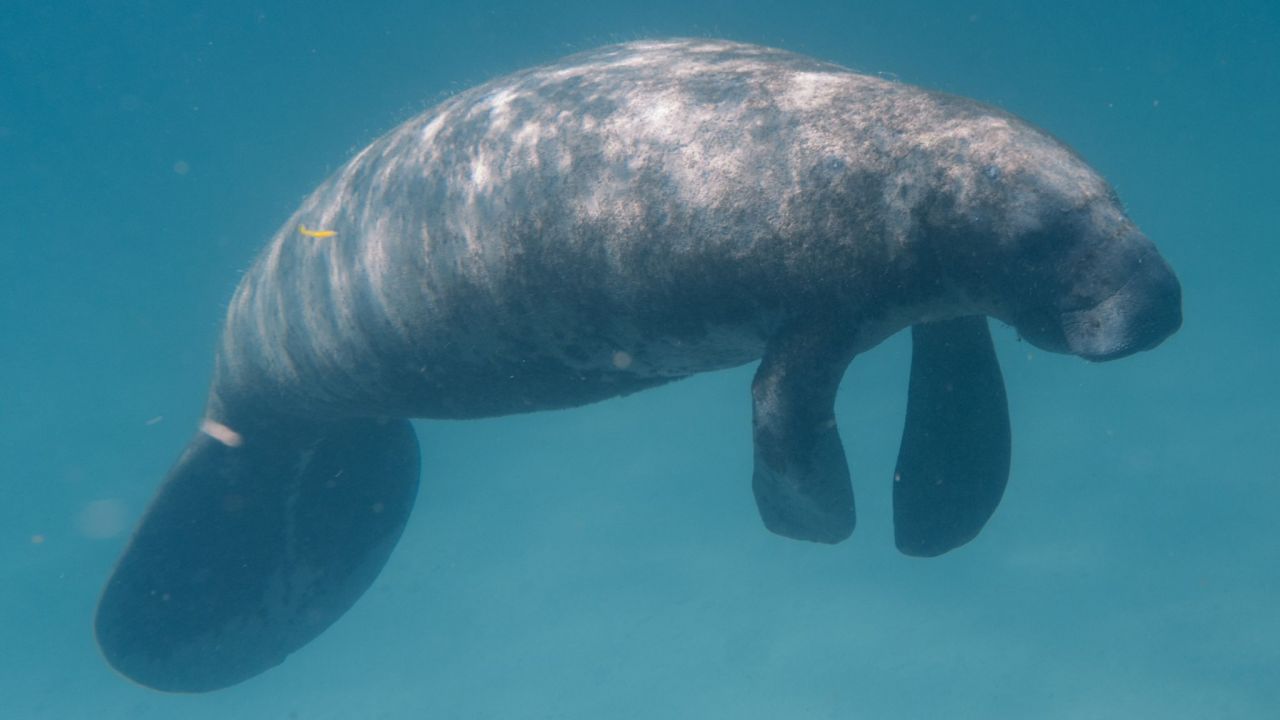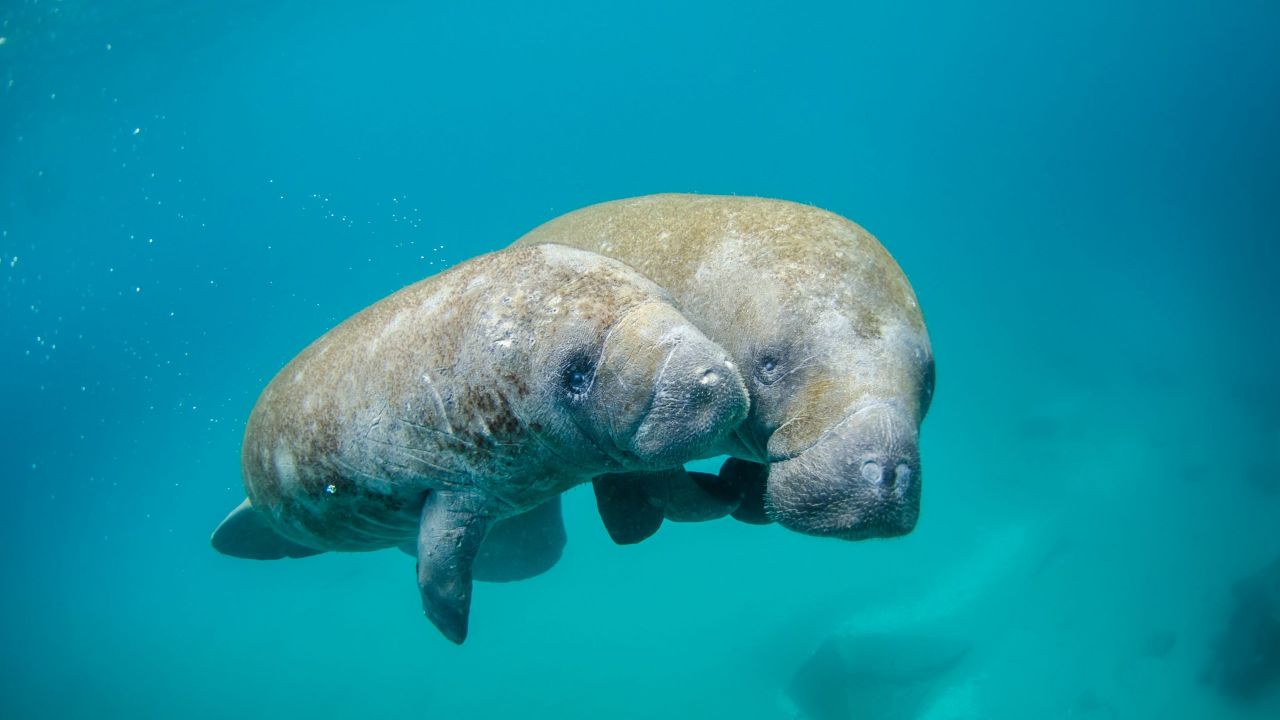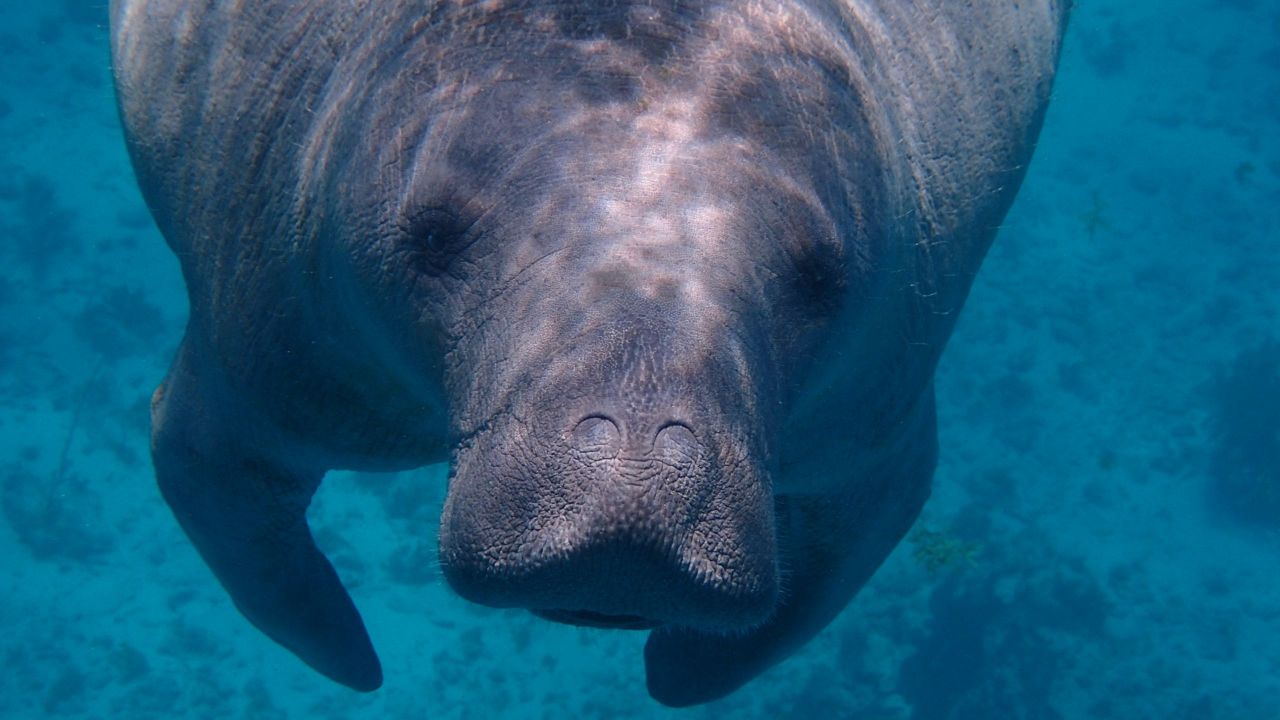
Manatee: large, aquatic marine mammals.
AKA: Sea cow
Kingdom: | Animalia
Phylum: | Chordata
Class: | Mammalia
Order: | Sirenia
Family: | Trichechidae
Genus: | Trichechus
There are three accepted living species of Trichechidae: the Amazonian manatee (Trichechus inunguis), the West Indian manatee (Trichechus manatus), and the West African manatee (Trichechus senegalensis).

Size and Weight:
Manatees weigh 880 to 1,210 pounds and average 9 feet 2 inches to 9 feet 10 inches in length. They can grow up to 15 feet and weigh up to 3,900 pounds. Females tend to be larger and heavier than males.
Appearance:
Manatees are large, gray aquatic mammals. They may appear more green or brown due to organisms like algae that grow on the skin. Their body is streamlined, fuller around the middle and narrowing to a flat, paddle-shaped tail. They have two forelimbs, called flippers, with three to four nails on each flipper. Their head and face are wrinkled with whiskers on the snout.

Diet:
Manatees are herbivores. They eat over 60 different freshwater and saltwater plants. These herbivores spend up to eight hours a day grazing and can consume 4 to 9 percent of their body weight in aquatic vegetation daily.
Habitat:
Manatees inhabit the shallow, marshy coastal areas and rivers.
Geography:
They can be found in the Caribbean Sea, the Gulf of Mexico, the Amazon basin, and West Africa.

Breeding:
During breeding, a single female, or cow, will be followed by a group of a dozen or more males or bulls, forming a mating herd. While breeding and birth may occur at any time during the year, there appears to be a broad spring-summer calving peak. The manatee reproductive rate is low, with a mature female giving birth every two to five years. After a gestation period of about a year, the female gives birth to one calf, or rarely twins.
Males do not assist with raising the calf. But the mother nurses her calf for one to two years, during this time calf is dependent on its mother. Calves are capable of swimming to the surface on their own and vocalizing soon after birth. Females reach sexual maturity around 3 to 5 years of age and males at 5 to 7 years of age.
Social Structure:
Apart from mothers and their young, or males following a receptive female, manatees are generally solitary animals. They spend approximately most of their day sleeping submerged, surfacing for air regularly at intervals of less than 20 minutes. They spend the remainder of their time grazing in shallow waters.

Lifespan:
Manatees are thought to live 50 to 60 years in the wild. They may live over 65 years in captivity.
Threats:
Manatees have no natural predators. The largest threats to manatees are habitat loss and collisions with boats and ships. With new developments along waterways, natural nesting areas are destroyed. Sewage, manure, and fertilizer run-off enters the water and causes algal blooms. Some of this algae is toxic and can kill manatees if they eat it.

Conservation Status:
All three manatee species are listed as Vulnerable by the IUCN’s Red List of Threatened Species.
Conservation Efforts:
In the United States, Florida manatees are protected by the Florida State Law in 1893. Manatees are protected by the Florida Manatee Sanctuary Act and are federally protected by both the Marine Mammal Protection Act and the Endangered Species Act. The Florida Fish and Wildlife Conservation Commission (FWC) protects and conserves manatees and their habitat through the Manatee Management Plan, as well as other conservation programs.
Sources: Save the Manatee Club and the Florida Fish and Wildlife Conservation Commission.
